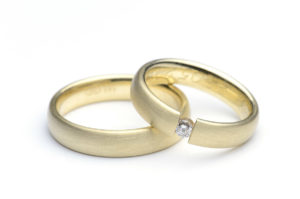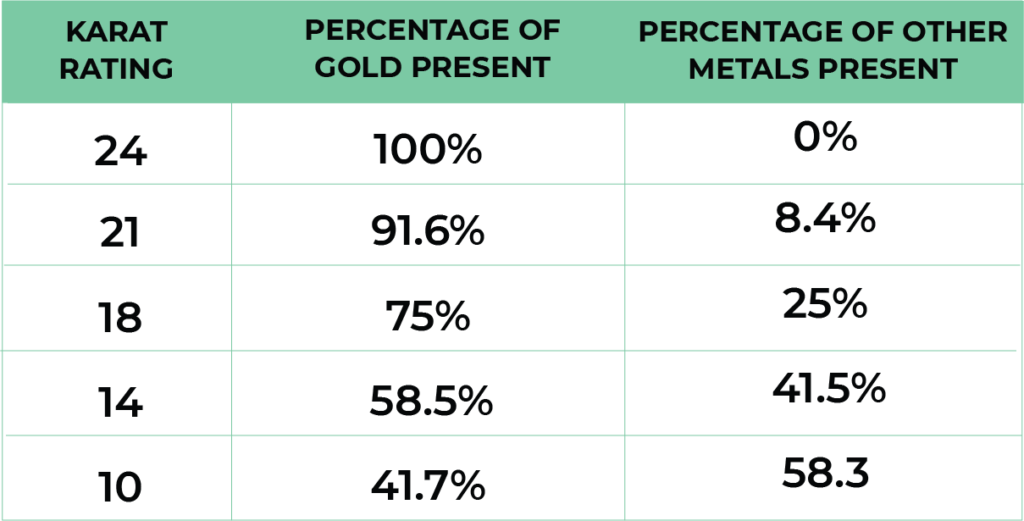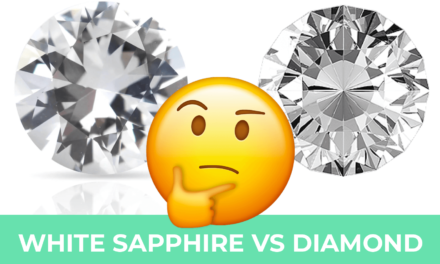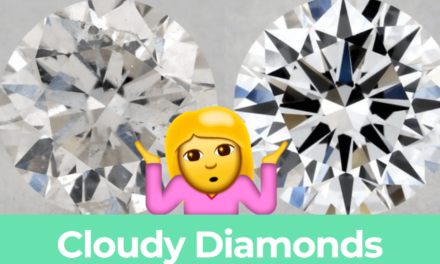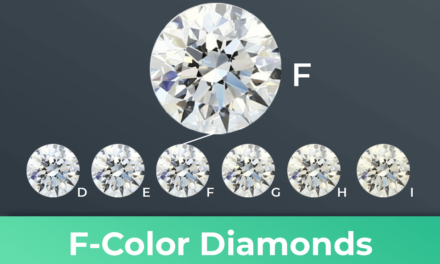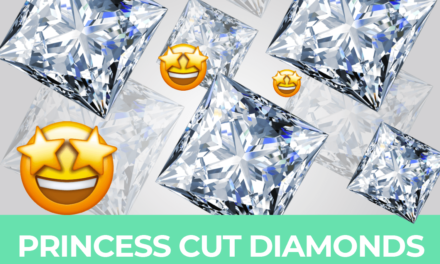My website is reader-supported. Buying through links on my site may result in me earning a CUSTOMER REFERRAL FEE at no extra cost to you.
Check out the latest deals at our top diamond vendor choice: James Allen
All You Need to Know About 10K vs. 14K vs. 18K Gold
A 10k, 14k, or 18k gold symbolize the ultimate in luxury and success and makes a perfect metal for an engagement or wedding ring.
However, not all golds are alike. Did you know that when it comes to the gold type for an engagement or wedding ring, there are three different options: 10K, 14K and 18K? And did you also know that these numbers refer to the amount of gold present in the metal alloy?
So what’s the difference between these three types of gold, and which one is right for you? Keep reading to find out!
In this article, we are going to discuss the following:
- karats vs carat
- the distinctions between 10k gold, 14k gold and 18k gold jewelry
- common gold alloys and common gold purity levels
- the appearance of different gold alloys as well as allergic reactions
- the pros and cons of each gold type for diamond jewelry such as engagement rings, wedding rings, and other fine jewelry
- where to buy the best and nickel free gold ring settings
Why might you want a gold engagement ring?
Gold is a precious metal that has been used in jewelry for centuries. It has a warm color that many people find appealing, and it’s also relatively affordable compared to some other precious metals like platinum. Gold also doesn’t corrode, so it’s a good choice for engagement rings that will be worn every day.
If you’re considering a gold ring, it’s important to know which type of gold you’re buying. There are three main types of gold mentioned earlier (10k, 14k, 18k gold) and they can either come in a yellow color or a white color. The difference between these types of gold is that they have different proportions of gold and other metals. This affects the color, durability, and price of engagement rings.
White gold vs yellow gold
Yellow gold engagement rings are most commonly made out of 10k or 14k gold, due to their affordability (price per karat).
White gold ring bands are manufactured by plating yellow gold engagement ring bands with rhodium. This causes the white gold engagement ring band to take on a slightly grayish hue that some people may not like – but it also makes the engagement ring much more durable.
Differences in gold purity
An item made of the purest gold would be 24k gold. A ring made of 18k gold would be 75% gold, and jewelers might inscribe it with the number 750 on it somewhere.
The chart below shows the percentages of gold contained in the various karat grades. Although gold jewelry is made with different amounts of real gold, the most common are 10k, 14k, and 18k. Each of these types of gold are available at different price points, but more about that later!
Gold Karat Comparison Chart 10k, 14k, 18k
By the way, what can also be confusing when buying jewelry is that “karats” indicate the purity level in gold, whereas “carats” indicate the weight of a diamond.
Why you can’t buy a ring made of pure gold (aka 24k gold)
It would be nearly impossible to find a ring made of pure gold. That’s because pure gold is a soft metal and wouldn’t hold its shape. It would bend and scratch way too quickly.
Therefore, it would make no sense to use this level of purity when making gold wedding or engagement rings.
You would start noticing scrapes and scratches in a 24-karat gold ring almost immediately. And before long, it would start losing its shape.
That’s why jewelers in the United States and other western countries purposely avoid pure gold and instead add several metal alloys to gold to increase its hardness and durability. In non-western countries, such as China, pure gold rings prove to be very popular though!
Most common gold alloys in gold jewelry
Precious metals and their strength against corrosion and tarnishing: most common is gold alloyed with silver or palladium, gold alloyed with copper or zinc, gold alloyed with nickel or other white metals.
- Gold: very strong against corrosion and tarnishing; is a very soft metal (its hardness is only between 3 and 4) so it must be alloyed to increase its strength.
- Silver: strong against corrosion and tarnishing but weaker than gold because it is not as dense as gold.; is a little harder than gold (between 5 and 6).
- Palladium: is even stronger than gold, which also makes it extremely hard (about 8); is an extremely dense metal.
- Copper: can corrode severely when exposed to humidity, acids, heat or abrasions. – Zinc: is an extremely weak metal that can corrode severely when exposed to humidity, acids, heat or abrasions.
- Nickel: strong against corrosion and tarnishing but weaker than gold because it is not as dense as gold.; has similar properties to gold alloys because it»s very soft (gold-white) so it must be alloyed with other metals.
Appearance/finish of the gold alloy in rings
The appearance of gold alloy depends on its composition which makes gold color lighter or darker depending on the added element(s). The most common gold alloys used for engagement rings are gold mixed with copper; palladium; zinc; silver; nickel or gold alloyed with a mix of gold-copper-nickel. Since each alloy uses a slightly different blend, they tend to vary in color:
- Gold, silver and palladium have no additives so they appear as gold color.
- Copper: makes gold more yellow/red/orange; increases hardness of gold but decreases its luster (shine).
- Palladium: gives gold a pink or grayish color.
- Zinc: makes gold colors lighter by removing red tint in gold alloys; also increase hardness and strength against tarnishing and corrosion.
How to avoid an allergic reaction
Nickel is a common allergen, and if you happen to be allergic to nickel it can cause serious reactions to your skin. If you are looking for a gold alloy for the right engagement ring or other piece of jewelry, make sure to ask your jeweler if the alloy contains nickel. Should it contain nickel, then they may be able to recommend an alternative that does not contain the allergen to avoid a nickel allergy and skin irritation.
How popular are yellow gold engagement rings vs white gold?
Some people like a rich yellow color, others’ don’t. Yellow gold engagement rings might be more common than you think. Of engagement ring bands sold, the ratio of yellow gold engagement rings to white gold engagement rings is approximately 3:2.
A comparison of 10K vs. 14K vs. 18K gold rings
In taking a closer look at the various levels of gold content in gold rings, we can notice several advantages and disadvantages of each, as follows:
Pros & cons of 10k gold jewelry
Quick note it’s 10 Karat and not 10 Carat gold 😉
The main feature of 10k gold is that the gold content is made up of less gold than of alloy metals, containing only 41.7% pure gold mixed with 58.3% alloy.
Because of this, an item made of 10k gold is a more affordable jewelry option than one made of 14k gold. You’ll also hear people refer to 10k gold as “discount gold.” This is why many top-rated jewelers don’t offer pieces made of 10k gold.
Most reputable vendors only offer wedding and engagement rings in the following metals:
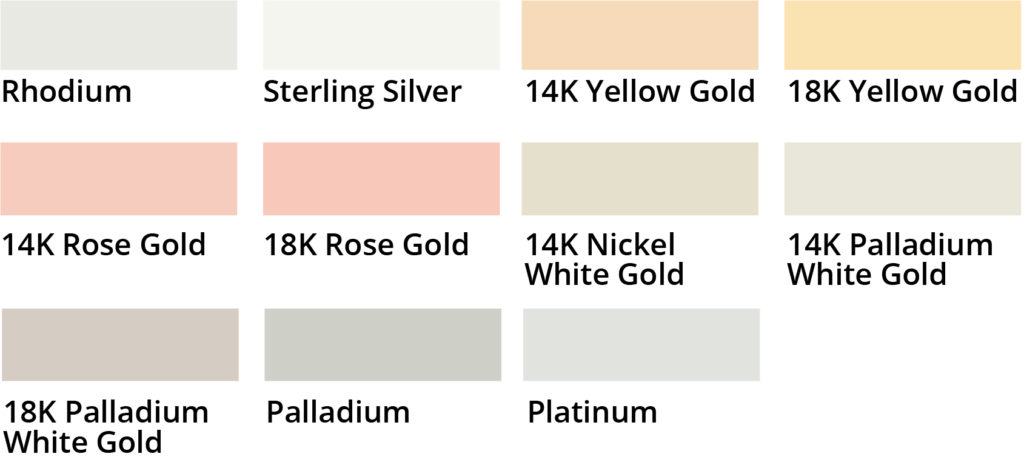 Ring Setting Color Comparison: Yellow Gold, White Gold, Platinum…
Ring Setting Color Comparison: Yellow Gold, White Gold, Platinum…
10K gold vs. 14K gold jewelry
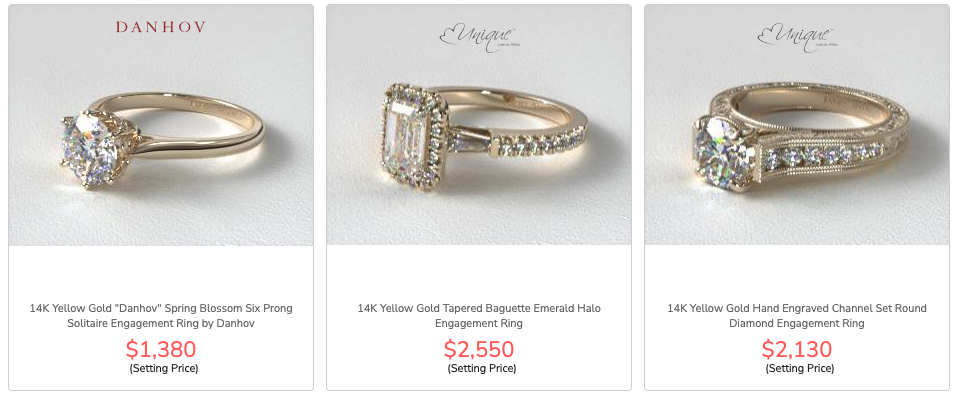
(you can browse some beautiful 14k yellow gold engagement rings here)
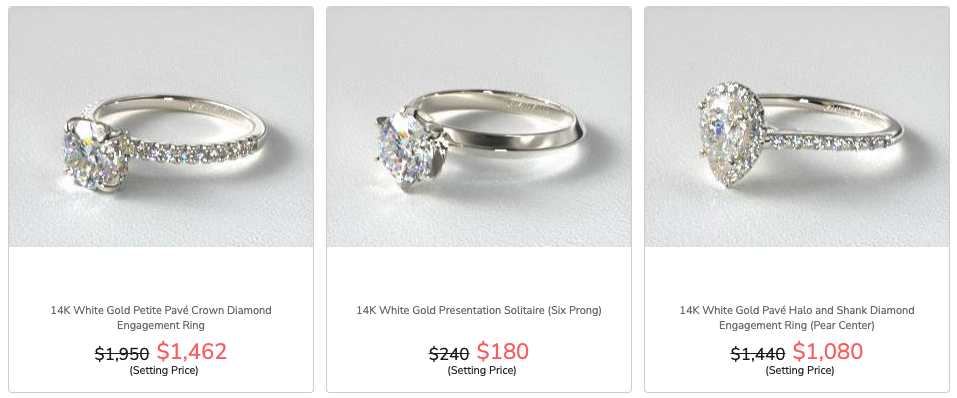
(and some 14k white gold rings here)
When you compare 10k vs. 14k gold, you will see that 10k gold appears a bit paler in color than 14k gold, but it’s hard to see the distinction with the naked eye. It also tends to tarnish faster than 14k or 18k gold, but it isn’t a problem if you polish it frequently.
The truth is that 10k gold offers excellent value for your hard-earned money! 10k gold is cheaper than 14k gold jewelry. You will find that an item made of 10k gold is more durable than something made of 14k gold. Overall, 10k gold jewelry is a smart choice for those in search of a bargain!
Pros & cons of 14k gold
When it comes to wedding and engagement rings, ones made of 14k gold are the most popular. Nearly 90% of those sold in the U.S. are 14k gold. The reason is that a 14k gold ring is 58.5% gold, which means it will not tarnish quickly and is durable enough to hold its shape and withstand being easily scratched.
14k gold vs. 18k gold jewelry

(you can check out some beautiful 14k yellow gold engagement rings here)
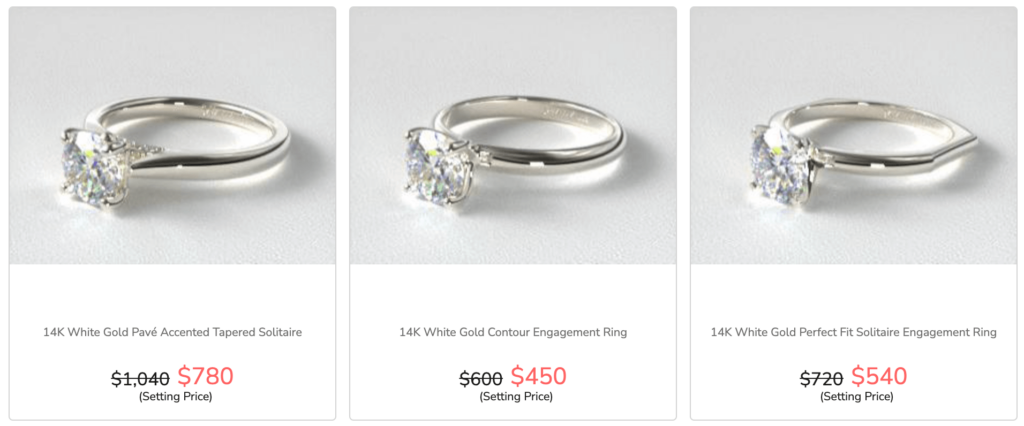
(shop for some beautiful 14 white gold engagement rings here)
Why would you choose 14k gold over 18k gold?
One reason is because 14k gold is less expensive than 18k gold. It also has a slightly brighter color than 18k gold, and it’s a little bit stronger so it’s less likely to bend or break.
However, 18k gold is softer than 14k gold, so it may not be the best choice if you’re looking for something that will last a long time. It also has a deeper color than 14k gold, which some people may prefer.
In the end, it’s up to you to decide which type of gold is right for you. If you’re looking for a less expensive option, 14k gold is a good choice. But if you want something that has a deeper color and is a bit more durable, 18k gold may be the better option.
Pros & cons of 18k gold jewelry
An item made of 18k gold contains 75% gold and is one of the most popular among gold metals because it provides the highest level of gold.
High-end jewelry is often made of 18k gold, especially diamond wedding and engagement rings. 18k gold is going to be the most expensive, but it certainly is beautiful and will tarnish less than jewelry made of 10k or 14k gold. However, the disadvantage is that 18k Gold, being softer, will scratch more efficiently and show signs of wear and tear.
The truth is that a ring made of 18k gold is going to need more tender loving care than a ring made of 14k gold. However, they will appear nearly identical. So, are you going to pay more for an 18k gold ring when the only noticeable difference is that it will require more care?
If you don’t mind paying for luxury, then an 18k gold ring would be your best choice, knowing that this ring contains the most amount of gold while being sufficiently durable. Preferring 18k gold over 14k gold is mostly about knowing that it contains more gold, which makes it more luxurious.
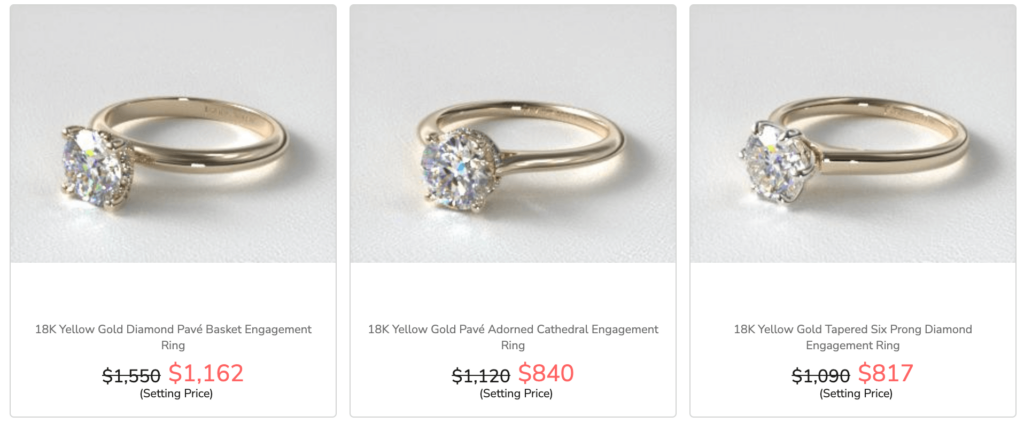
(you can browse some beautiful 18k yellow gold solitaire rings here)
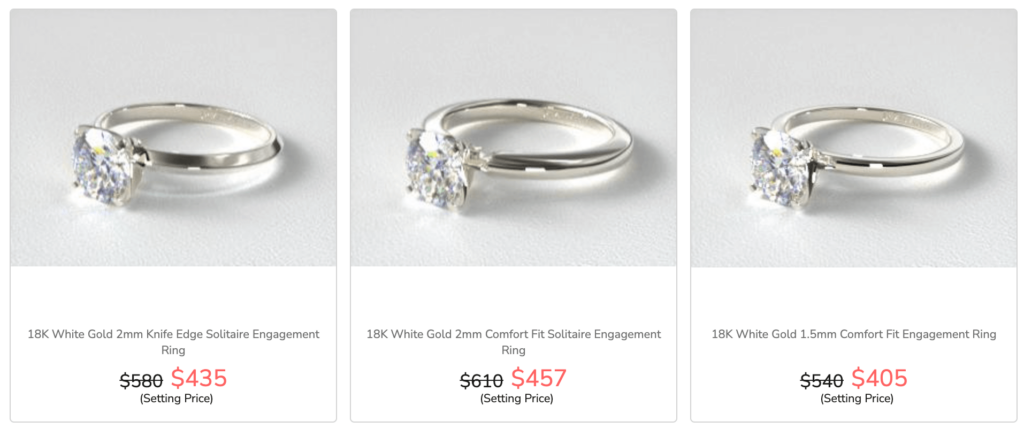
(and here are some stunning 18k white gold solitaire rings)
Best places to shop for gold wedding and engagement rings
If you do not have much experience shopping for diamond and gold jewelry, you might think a well-known jewelry store would be your safest option. Traditional jewelry stores give the impression that their jewelers are the most knowledgeable and that their rings have the most beautiful diamonds.
This is why many people are hesitant to shop for jewelry online. But the world has changed. You can very easily purchase diamond and gold engagement rings online these days.
You can find the most beautiful selection of the diamond and yellow gold engagement rings that match your skin tone on sites such as James Allen. They offer a much wider variety than you can find almost anywhere else and at much lower prices.
By not being burdened with the cost of maintaining a storefront, online vendors can pass those savings onto our customers.
On sites such as James Allen and Blue Nile, you will find a vast selection of diamond ring sets with various gold types. For example, you can get 10k yellow gold, 14k white gold, 14k rose gold, and 18k yellow Gold in many different styles.
Of course, you can also find ring settings in white metal or white gold or rose gold and platinum with rhodium plating.
CHECK OUT OUR INFO GRAFIC ABOUT 10K, 14K & 18K GOLD ENGAGEMENT AND WEDDING RINGS


